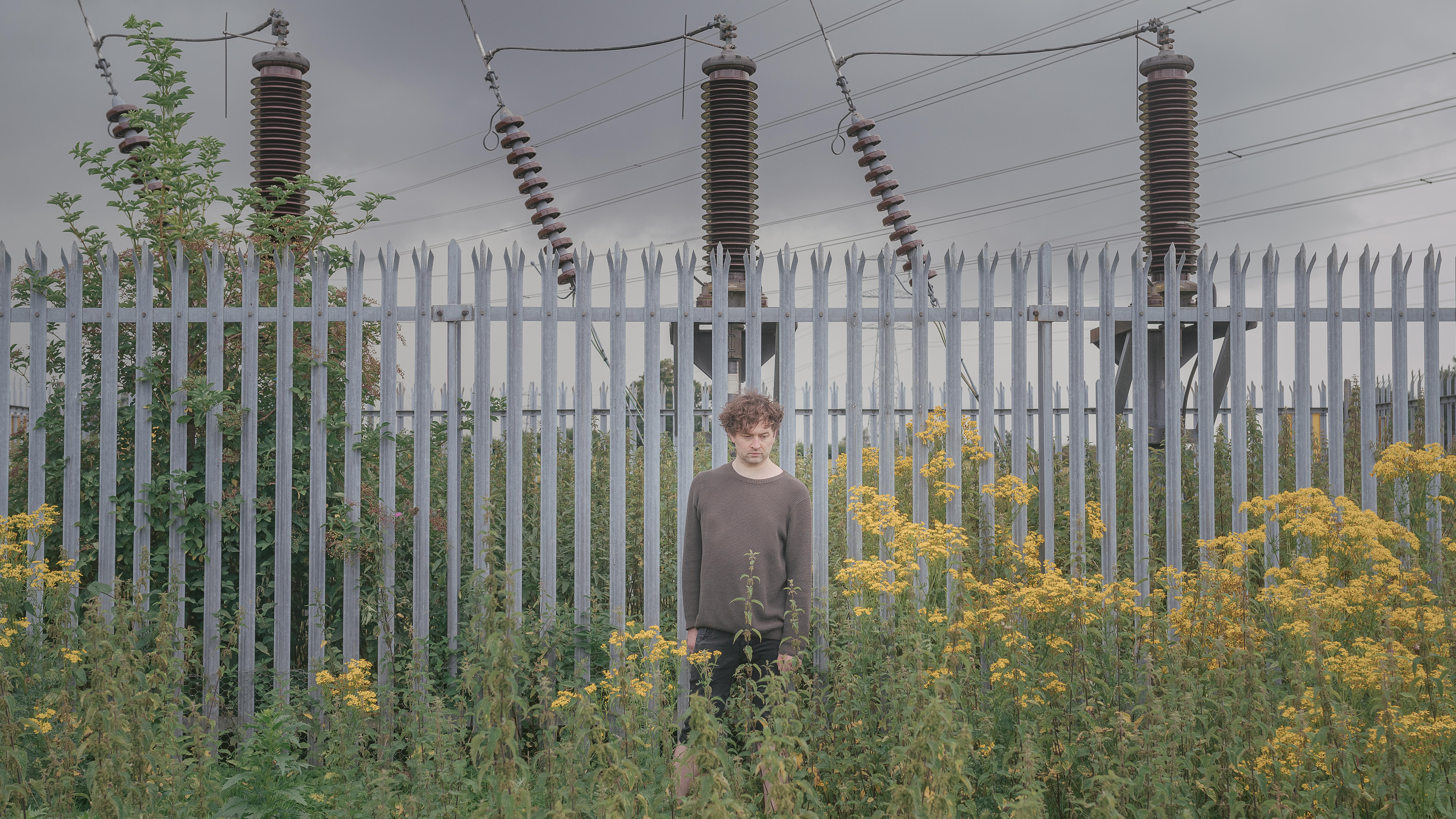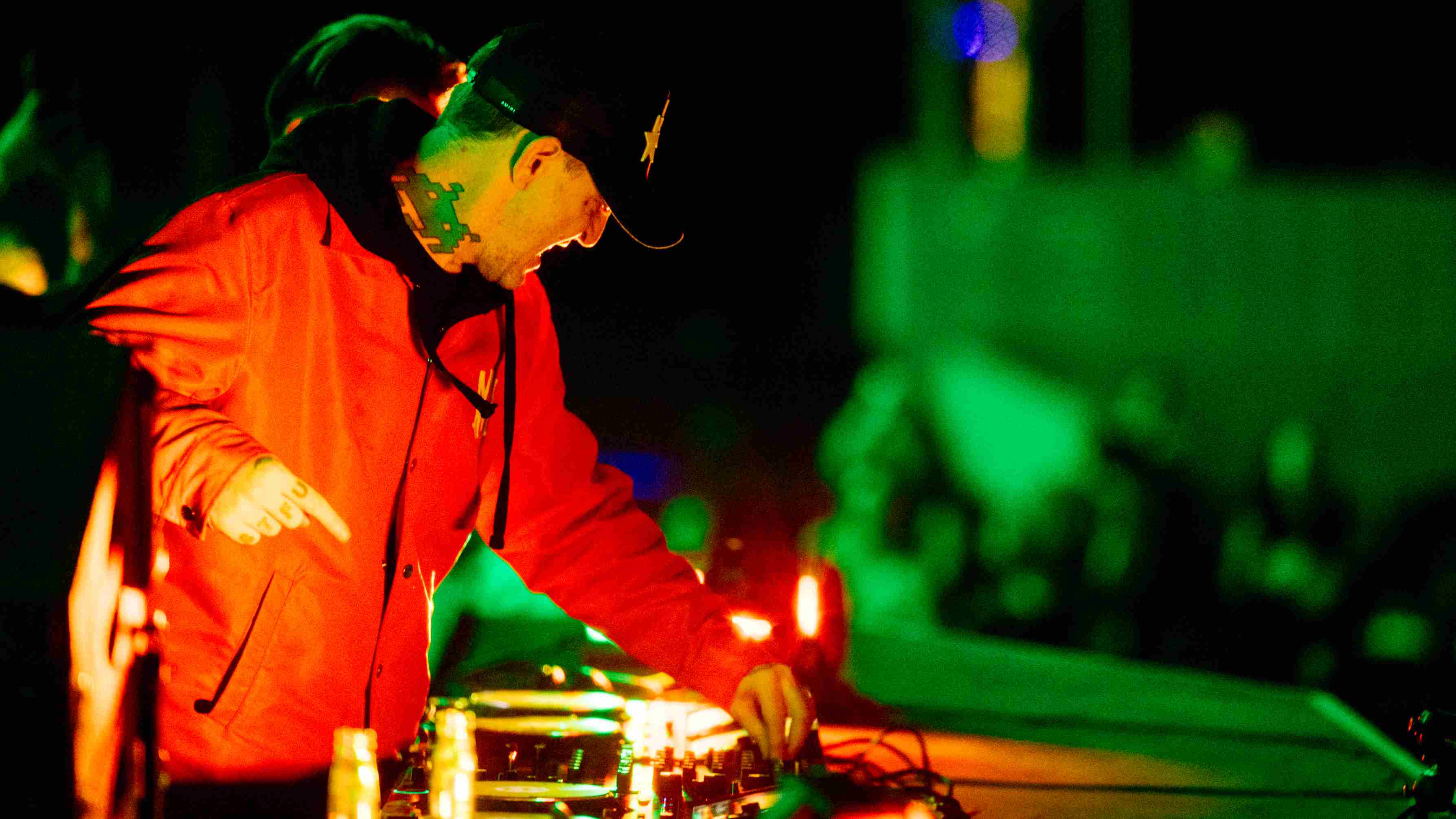Nathan Fake: "Drums are usually my starting point. Despite my music being quite melodic, I've always been obsessed with electronic drums and abstract percussion"
Following the release of a companion EP to his 2020 album Blizzards, Nathan Fake talks about his approach to remixing and gifts us with three production tips

Built from keening detuned pads, soaring synth lines and gritty, lo-fi percussion, Nathan Fake’s tunes convey a psychedelic melancholia that’s become something of a signature sound in the near-two decades since his Border Community debut.
That’s not to say his style isn’t in evolution, though. After 2018’s Providence saw the producer shift his focus away from club-adjacent beats and towards synth-led abstraction, the 2020 LP Blizzards melded the hyper-melodicism of his early work with a renewed percussive vigour that prompted numerous publications to declare it as his finest work to date.
This year, Fake’s released a companion EP to Blizzards that lines up two remixes - a haunting ambient take on Cry Me A Blizzard from AFRODEUTSCHE, and a reinvention of Vectra from Irène Drésel that veers into squiggly trance - alongside a live version of Torchsong and an Orbital-inspired anthem that’s been in the works since he was a teenager. We caught up with the producer to talk through the studio set-up behind the new EP, his approach to remixing, and three essential tips for creative production.
When did you start making music, and how did you first get started?
“I guess I first started "making" music when I was around 15, I'd saved up and bought a Boss DR-550 drum machine and I had a Casio keyboard, and I used to record beats I'd made onto tape - then I got a SP-202 about a year later and that was when I started making "tracks", i.e. just little jams made of loops I'd sampled off my drum machine, and also random samples and sampling myself playing the keyboard etc. Then eventually by the time I was 18 or so I had a PC and started using Cubase and that's when I sort of levelled up to making actual real tracks that people wanted to release.”
I've got a photographic memory so I can genuinely remember this idea note-for-note from when I was 15
Tell us a little about your latest release - what were the influences behind “Sandstone”? What led you to release this track separately and not with the rest of the music on Blizzards?
“Sandstone is basically an idea I had for a track when I was like a teenager, but didn't have the equipment to actually make it, and so I decided to finally make it now. [laughs] I've got a photographic memory so I can genuinely remember this idea note-for-note from when I was 15.
Get the MusicRadar Newsletter
Want all the hottest music and gear news, reviews, deals, features and more, direct to your inbox? Sign up here.
“It's heavily inspired by Brown-era Orbital, but much more raw and minimalist I think. But the block chord samples and pingpong delays definitely scream early Orbital. It didn't end up on Blizzards as it was actually finished after Blizzards was released.”
What led you to record this alternate live version of “Torchsong” for the EP? Could you briefly walk us through any of the equipment or processes you’re using on this live take?
“The live recording of Torchsong was recorded when I was putting together my live show which was meant to be toured in 2020, but the only airing it got that year was the couple of live streams I did from home.
“The live version isn't very exotic gear-wise - it's done mostly on Ableton Live, jamming/improvising with a loop of the track, also using the Waldorf A1 for the synth parts, whereas on the album version it's a Korg Minologue. The reason for the very slimline live setup was to make it easier to take on the road.
Why did you choose Irène Drésel and Afrodeutsche in particular to remix these tracks from Blizzards?
“I'm a big fan of Henrietta's [AFRODEUTSCHE's] music and I'd been wanting to get her to remix something off Blizzards for a while, after I'd got really into her album on SKAM and a couple of her other releases.
“The Irène Drésel came about actually as a remix swap, I'd remixed her in 2019 at her request. I love what she did to Vectra, the original is quite bouncy and fun and she made it into a dark trance kind of thing, totally changed the context of it.”
How do you approach the process of remixing the work of other artists?
“Usually I'll listen through the stems and find something in there that grabs my attention - often I'll take a single part of the track then I'll end up writing something totally new around it, but based on the original.
“If you listen to any of the remixes I did in the last couple of years you'll hear that's what I've done to them. Also I find it helps to just listen to the original track in full a few times to just sort of get the feel of it and imagine what I can apply to it in the remix.”
Tell us about your studio/set-up.
“It's a home studio - I used to have a lot more hardware but I sold a bunch of it last year in lockdown. I still have my trusty Roland SH-09 and my Korg Prophecy, they're my absolute faves, also my MC-202. Also I could never sell my aforementioned DR-550, not that it's worth anything more than about £20 now.
“Software is at the core, I use Ableton Live (like everyone) and Cubase VST5 (yes I know it's super ancient but I love it and it's part of my brain) and Adobe Audition and Cool Edit Pro (also ancient and much loved). I'd love to have some more hardware! I'd also love to be able to get my head around some different software.”
What DAW (or DAWs) do you use, and why did you choose it?
“I started out using Cubase, as at the time (early 2000s) that was the only DAW I was actually aware of. Then once I started releasing records on Border Community I made friends with other musicians/producers who were using a range of different stuff and that opened my eyes a bit.
“I've been using Ableton Live for my live sets since 2004. I use it a bit for writing and recording too, it's very powerful. It seems they've definitely got a monopoly on the DAW market now, as I mentioned before my friends were using many different programs back in the early 2000s, now it seems mostly everyone uses Ableton.”
What one piece of gear in your studio could you not do without, and why?
“My laptop! [laughs] Very boring I know, but it's the most essential thing in there for making music at the moment.”
What's the latest addition to your studio?
“To be honest I've not bought any gear for so long - I've recently upgraded Ableton but that's not very exciting to talk about. Recently a friend showed me the Soundtheory Gullfoss VST for mastering, which is amazing. I've no idea how it works but it's very impressive how it deals with sound.”
What dream bit of gear would you love to have in your studio?
“I used to have a Roland Jupiter-6 and I'd love to have one again. Also I'd really love a Casio CZ-101, they are rather hard to come by despite being not very pricey (not last time I checked anyway). I'd love a decent reel-to-reel machine too, I used to use cassette tapes all the time (around the time of Steam Days and Providence) but I'd love to level up to that kind of recording.”
When approaching a new track or project, where do you start?
“It really depends on the piece, but mostly I either start with a melody inside my head and I'll work it out on the keyboard and then build something around it, or maybe add it to something I've made previously. Or quite often I'll start with a beat and end up adding stuff to that, chords, melodies etc.
“Drums are usually my starting point. Despite my music being quite melodic I've always been obsessed with electronic drums, drum machines etc, using abstract percussion sounds and stuff. Other times I might just be messing around on a synth, playing stuff, and I'll unexpectedly come up with a great melody or chord sequence.”
What are you currently working on?
“I'm actually working on album number six at the moment. It started taking shape last year during lockdown and I'm super excited about how it's sounding. Also looking forward to touring the Blizzards live show some more in the coming months.”
Nathan Fake's three production tips
1. Record stuff live
“I know this isn't very novel, but most of my good ideas for track arrangement come from jamming stuff live, then editing the recording afterwards. It is quite limiting, but it adds some adrenaline in there and can make for some interesting snap decisions and stuff.”
2. Don't clutter up the percussion
“I don't know about other people but I sometimes fall into the trap of adding way too many percussion parts. Instead of adding more shakers or something, try adding a subtle synth part, maybe something percussive, but adding something tonal rather than more percussion. That can give you more options arrangement-wise too.”
3. Mono your reverb
“I love the sound of mono-ed reverb, that's the reverb width set to zero. A lovely wide reverb is nice, obviously, but they can really fill up the mix unnecessarily, and I love using small mono reverb on drums. It makes them sound less dry and harsh (especially if listening on headphones where bone-dry drums can be kind of unlistenable) and it also adds a lush vintage quality to the sound and overall mix.”
Nathan Fake's Blizzards Remixes is out now on Cambria Instruments.



I'm MusicRadar's Tech Editor, working across everything from product news and gear-focused features to artist interviews and tech tutorials. I love electronic music and I'm perpetually fascinated by the tools we use to make it. When I'm not behind my laptop keyboard, you'll probably find me behind a MIDI keyboard, carefully crafting the beginnings of another project that I'll ultimately abandon to the creative graveyard that is my overstuffed hard drive.









